#UST THOMASIAN NSTP DRRM
Text
DRRM: Brgy. Sangandaan, Proj. 8, Q.C., LAGING HANDA!
As a freshman in the University of Santo Tomas, we are required to take up this course called NSTP (National Service and Training Program), and we’re currently focusing on what we call DRRM (Disaster Risk and Reduction Management). So what are all these and what do we do? Basically, we learn and get to know more about the different communities in the country, and how we can do our part and contribute to the overall well-being, happiness, and safety of the people who live in it. DRRM is grounded and focuses on four thematic areas: Disaster Prevention and mitigation, Disaster Preparedness, Disaster Response, and Disaster Rehabilitation and Recovery.
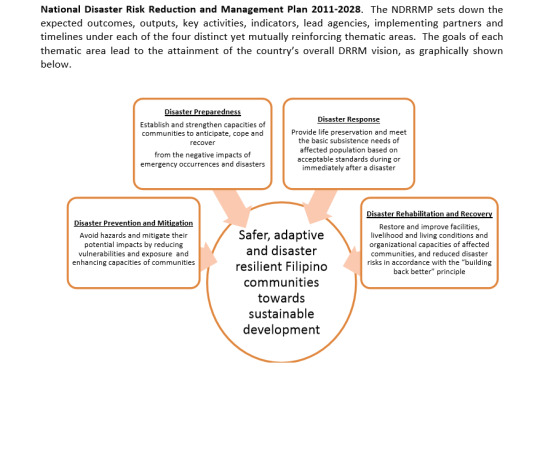
For the past 7 years that I’ve lived in the humble and thriving community of Brgy. Sangandaan, I’ve never had the chance to interact with the people who worked in the barangay hall or office. And now, I’ve recently had the chance to have a walk and “kwentuhan” with one of the local head persons of our barangay’s DRRM: Sir Fidel Nisperos.
December 9, 2019, I visited the brgy. hall. All of the staff and workers who were there were very patient, kind and accommodating. And as I was waiting for Sir Nisperos, I was able to observe that the place has a very happy and healthy working environment, and all seemed very close to one another. This even brought a smile to my face.
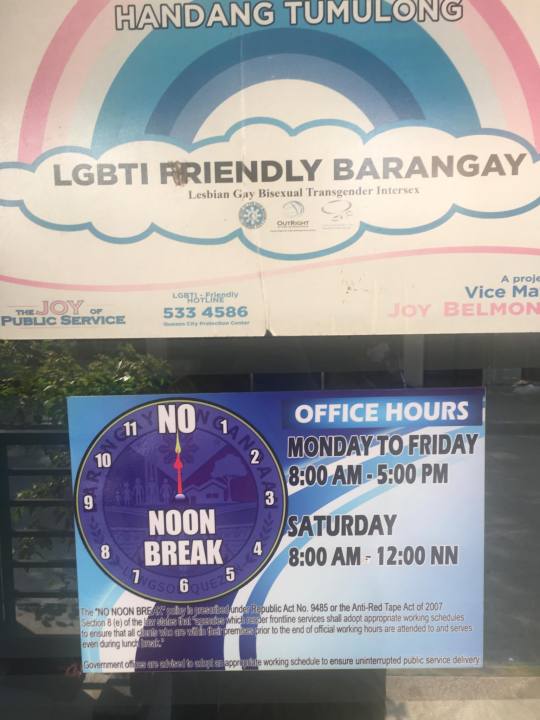
Sir Fidel was kind enough to accommodate an interview with me even without prior schedule or notice. He enlightened me and shared with me almost entirely everything I needed to know about our barangay’s DRRM.
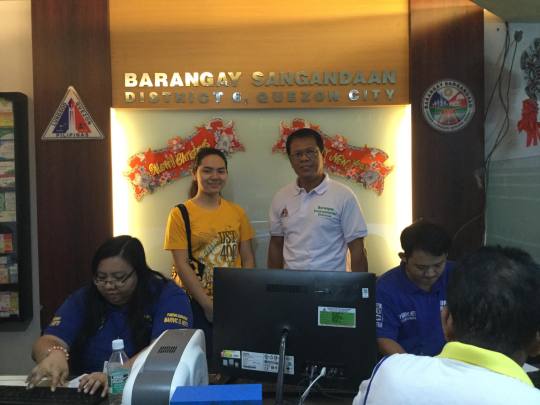
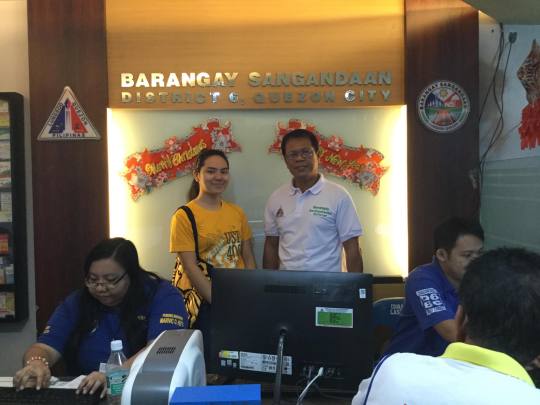
We first identified and analyzed the hazards, calamities, dangers, that may affect and disturb the peace and safety of the community. Sir mentioned a few specific incidents and calamities that have already occurred: in 2012, a large fire spread across 100 homes affecting around 200 families; in Bagyong Ondoy the floods were so great that it surpassed the height of an average Filipino and the height of three-story townhouses. We are now preparing for “the Big One”.
So how does DRRM prepare for this? To identify a nearing threat, they always stay updated with the weather forecast. They often hold earthquake drills (quarterly) in areas like the Savemore supermarket (Project 8) and the Villagers Montessori, because these are the places where a lot of people mostly gather. They are always alert and standing by, since the Blue ridge, Libis in Q.C. is the nearest fault line to us. Their evacuation emergency plan for any kind of calamity, is to escort people to the designated evacuation centers, namely: first plan is at the Mendoza covered court, then Ismael Mathay Sr. High school, since both are of the highest places in the district, and there are a lot of buildings. If ever it is too full, next is to evacuate to the church beside the Brgy. Hall, the Immaculate Conception Church. Last resort is to the private village, Paradise Village’s covered court (given their consent).

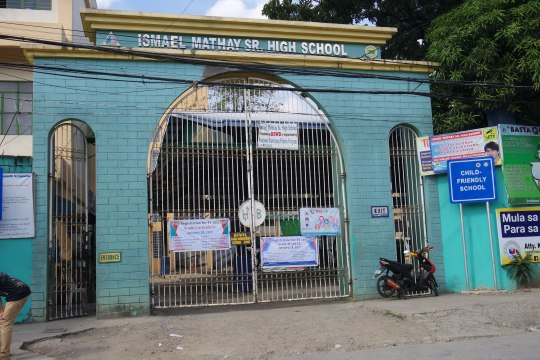
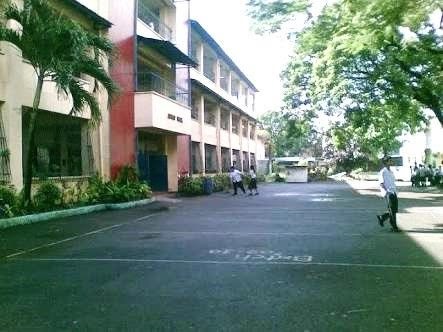
When it comes to mitigation, He said that they first look back at the previous incidents and what may have caused things to happen, and what may have gone wrong. As for instance, during Bagyong Ondoy, there wasn’t enough mitigation for it, and since then, the government has been continuously cooperating with the different districts to ensure that everyone is prepared. They also conduct inspections of hazards, such as large trees that may cause harm to people and houses next to them, so they eventually have to cut these trees down. They also frequently de-clog the sewers, and provide dissemination programs on proper cleaning of the home and environment to avoid illnesses and viruses such as Dengue, and hygiene programs.
We took a little walk around, this when we talked about the Depressed areas and the Informal settlers who live by the river and underneath the bridge. He said it to be one of their main concerns for a number of reasons: they are one of the main causes of the river’s pollution; it is dangerous to live underneath the bridge and beside the river, since one can easily fall into the river, or during storms, floods may easily surge them due to its overflow; they are the poorest in the society, therefore they don’t have the right drainage and septic tanks that enable them to avoid floods; since they are the ones usually most affected during calamities, most of the funds for financial assistance goes to them. At this moment they are still waiting for the government’s approval and provision for them to be relocated, and they are continuously encouraging them to consider this. This has to be one of the most hazardous places. Another is that there are a lot of stray dogs by the route I pass towards home, and two or three times they’ve already barked or threatened me (but didn’t harm me thankfully).
One of the safest spaces in the barangay has to be the area within the Brgy. Hall, beside it the Church and beside the Church is the Health Center. Having these three geographically close to one another gives (if not all, to me personally) a sense of security, safety, ensurance, and community. Personally based on my observation, one of the best practices my community has is cleanliness. I walk from place to place around the barangay very often, and I have hardly seen any trash such as wrappers or plastics lying around.
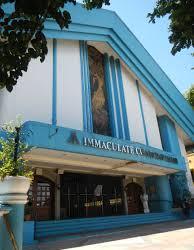
In addition to these, I asked Sir Nispenos about the specific and various programs for the PWD, elderly, and the youth. For the Pwd, they have a list and record of them so that they’d know who to prioritize. For the Senior Citizens, they do their best to screen and identify the senior citizen indigents so that the people who first get the government pensions are those who really need it. And lastly for the Youth, there are life training programs, especially for those out of school, such as welding, automobile, call centers, sewing and dressmaking, cosmetology, etc. For those who wish to study, there are several scholarships offered, supported by the government and the diocese of Cubao.
Personal insights
I think one of our main issues and concerns in our community is poverty. This has been the most obvious yet unresolved and dominating issue in our country, and I can see it clearly everyday as I pass by the bridge where the informal settlers live. Based on my own knowledge on politics and government programs, support and services, I think the government should focus on helping these informal settlers both find a proper home, and gain a sustainable way of earning money and making a living. The government should support them in a way that sometime in the near future they are then able to eventually support themselves. As Sir Fispenos said, most of the funds go to them since they are always the most affected, due to lack of resources, nd the lack of resources come from lack of sustainable jobs and income. Therefore, the cycle goes all over again. The allocation of our budget tends to be quite messy at times, but then again there are a lot of issues and concerns that need focus and I hope the government recognizes this. I simply realized how blessed I am to be able to live a comfortable life. I am thankful for the everyday blessings of having a happy and complete family, a religious community and a solid group of friends who are always there to support me, a roof over my head, having food to eat three or more times a day, studying in a prestigious university, and knowing and having a deep relationship with God. These things I try not to take for granted every day, and I eventually realize that everyone, every single child of God deserves to be loved and to be blessed with happiness and peace, all the days of their lives. That’s why we must in return share these blessings given to us. It is important to be socially aware of these issues and kinds of things, because it strengthens our sense of community, and helps us empathize more with the people around us. One concrete way is to be more active in social development programs, like me not only in NSTP, but in my religious org. wherein I am able to reach out to different kinds of people at different states of life. One suggested way is to also create my own action plan, so that I am able to openly share my personal thoughts and takes on an issue then it may eventually contribute to the greater good.

Sources: https://sites.google.com/site/ismaelmathaysrhsqcsecondary/history-1 , https://www.google.com/url?sa=i&rct=j&q=&esrc=s&source=images&cd=&cad=rja&uact=8&ved=2ahUKEwiso6Ol1LDmAhVT8XMBHWAvBicQjhx6BAgBEAI&url=https%3A%2F%2Fcommons.wikimedia.org%2Fwiki%2FFile%3A03102jfBarangays_Church_Conception_Talipapa_Sangandaan_Quezon_Cityfvf_04.jpg&psig=AOvVaw1vBG8_kcajqoUVAgsGs0oZ&ust=1576258930208586 , https://foursquare.com/v/savemore-project-8/51511425e4b0fe2bab60f58d?openPhotoId=51a6d80d498e1575af11bb58 https://www.bing.com/images/search?view=detailV2&ccid=17vSFTAP&id=EF31C8E734D970C54EA5A64AF405583ECDB67CDE&thid=OIP.17vSFTAPBzCazaZNrBltdwHaE7&mediaurl=https%3A%2F%2Fs.yimg.com%2Fny%2Fapi%2Fres%2F1.2%2F3xRorRyaPJ4VHMsZbVPUcg--%2FYXBwaWQ9aGlnaGxhbmRlcjtzbT0xO3c9MTI4MDtoPTk2MDtpbD1wbGFuZQ--%2Fhttp%3A%2F%2Fmedia.zenfs.com%2Fen_us%2FNews%2FReuters%2F2014-01-28T083908Z_1069901473_GM1EA1S1A3P01_RTRMADP_3_PHILIPPINES.JPG.cf.jpg&exph=853&expw=1280&q=poverty+quezon+city&simid=608007690116796036&selectedindex=1&ajaxhist=0&vt=0&sim=11
http://ndrrmc.gov.ph/attachments/article/41/NDRRM_Plan_2011-2028.pdf
1 note
·
View note
Text
Disaster Risk Reduction and Management (DRRM) for NSTP
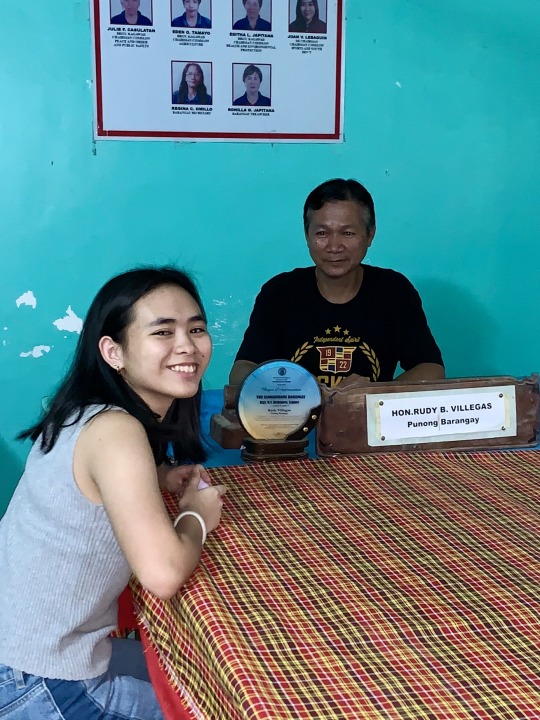
Hello everyone! It’s actually my first time writing in this blog so I hope all of you will be interested! I think you guys have an idea what my first post will be about, based on the title. If you’re from the Philippines, I’m pretty sure a lot of you will be able to relate to this.
If you live in my country, I guess some of you have heard about the calamities occurring here nowadays. Does the name “Typhoon Tisoy” ring any bells? If it doesn’t, you might as well look it up right now. Anyway, you might be wondering, how do people survive natural disasters like these? In line with this, I’m gonna be talking about a specific barangay in Leganes, Iloilo and its practices when it comes to Disaster Risk Management.
Yesterday, I went to this small barangay, Brgy. M.V. Hechanova, and met its captain, Hon. Rudy Villegas, for a tour and interview. It wasn’t a very far drive since it took about 20 minutes to get there from the city. As I went around, I could see that it was a sleepy place situated along a beach. Apparently, most residents make use of its advantageous location for income by becoming fishermen. Unfortunately, there are also several cons living along the beach.
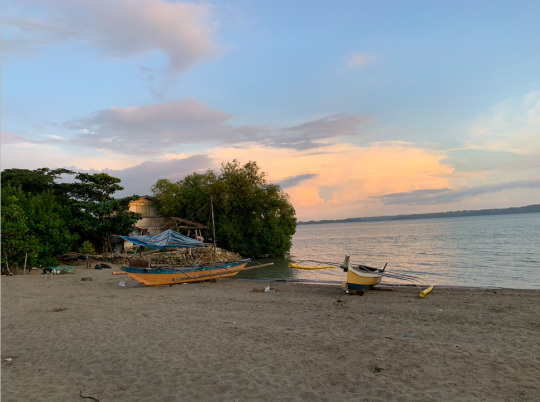
Due to the location of the barangay, it is one of the first places to be affected by calamities such as typhoons. According to Hon Villegas, typhoons occur the most frequently and have the most adverse effects in comparison to other calamities. This is why the barangay officials try their best to ensure that its people get to safety before disaster strikes. Of course, they’d have to practice correct disaster risk management protocols. Hon. Villegas shared to me that in times of calamities, their barangay disaster risk reduction and management council (BDRRMC) monitors alerts given to them by the city DRRM councils. If a weather bulletin is issued to them by the PAGASA, the barangay is then to implement necessary measures such as preparing food supplies, flashlights, medicine, and etc.
The DRRM practices of the barangay depend on the severity of the typhoon. If the typhoon entails light to severe flooding, the officials would move the people to a space near the hall and the church. This is considered their safe space in the barangay, as this is located on high ground. The officials prioritize the people living in hazardous places, such as those staying right next to the beach. This is because its close proximity to water and low altitudes. Trash and broken glass which could harm people in an impending flood can also be found along the beach. Since the backbone of the barangay’s economy is fishing, several fishermen reside within hazardous places. They are most affected by heavy rains and typhoons because they would not be able to catch for income on rainy days. People living near the beach also sustain the most damages to their homes and are often unable to have them repaired.
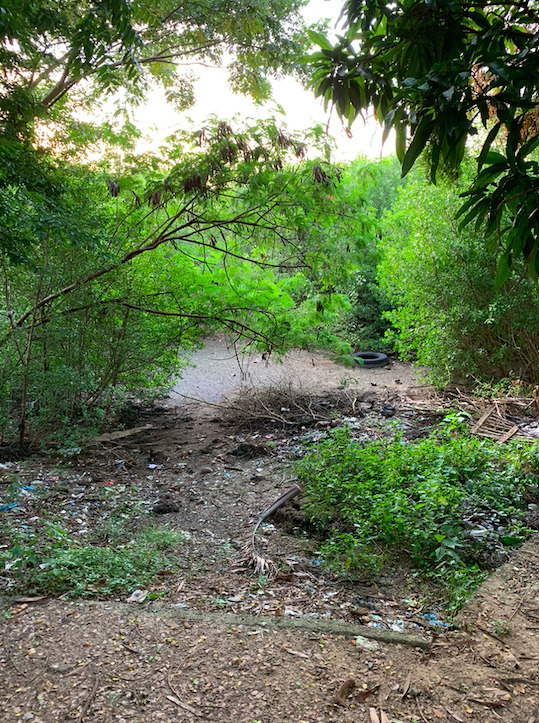
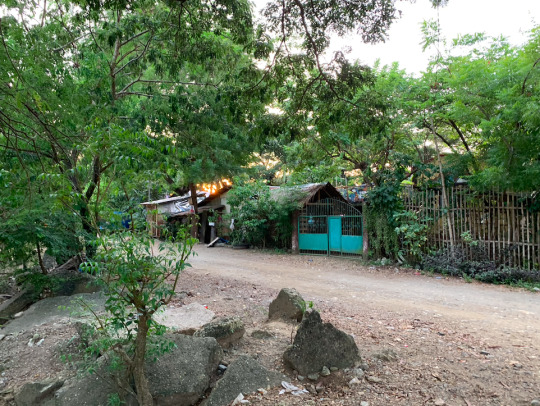
(hazardous places)


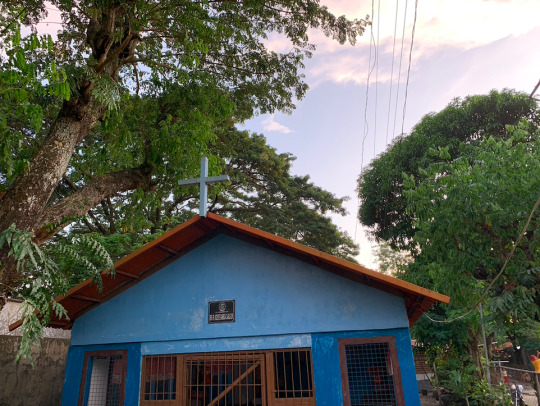
(safe spaces in the barangay)
A big problem the barangay faces is that they lack funding to improve their supplies for its citizens. Since they are small, they have limited facilities and are unable to buy things other than flashlights, life jackets, and minimal food supplies and medicine. In order to overcome this challenge, the barangay conducts fundraisers and relies on the aid secured from private and public sponsors/donors. In order to help the victims of natural calamities, the barangay officials allocate their budget and conduct relief operations for them. Furthermore, the barangay also conducts frequent beach cleanups in order for the trash and broken glass to not be as debilitating in times of flood.
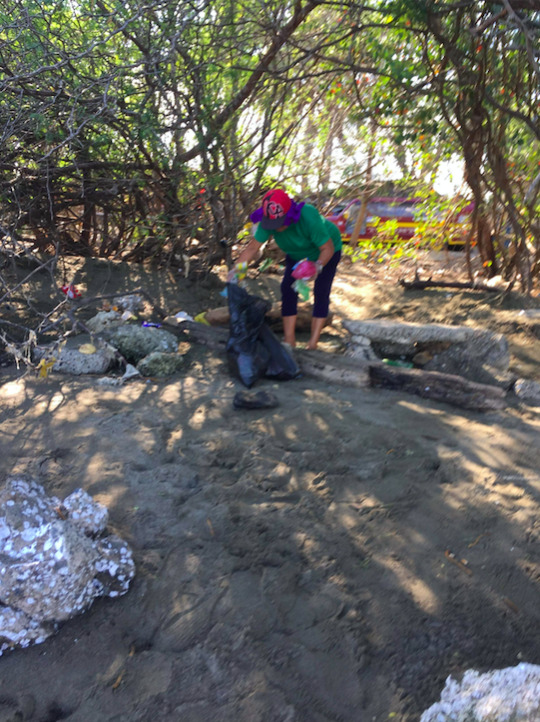
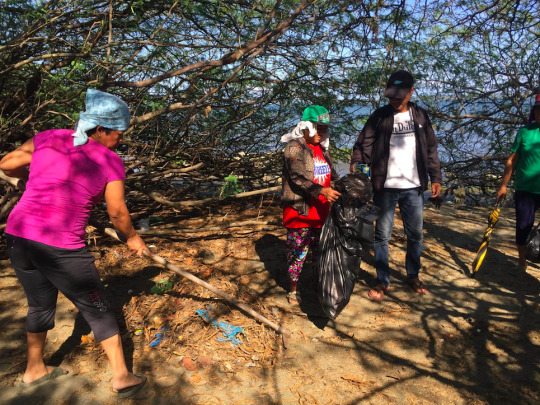
(best practices)
With this activity, I realized that not only this barangay, but several barangays have difficulty in securing a budget for their proposed activities. This may be due to its small size, or a problem involving higher public officials. This greatly saddens me since this reflects the poor situation in our whole country. Our country is also experiencing lack of supplies and slow deployment of aid. Fortunately, at least this barangay puts a lot of effort in its speedy recovery.
Conducting this interview and community walk is such a refreshing experience because it gives me an idea on how public officials plan on how to take care of its citizens in times of need. Indeed, it is an eye-opener because it also gives me a glimpse on the problems small barangays such as these encounter when it comes to floods. As a Thomasian, I must be critical in thinking and aware about what is happening with our country. By using what I have learned in UST, I must show compassion, competence, and commitment in what I am doing. This can be done by joining outreaches and meeting with public officials in order to do what I can for small barangays such as these. I’m glad the local government units are doing its best despite the challenges along the way and I hope they are able to keep up the good work in the future.

heads of the BDRRMC

possible evacuation centers

what to do in case of a typhoon
1 note
·
View note
Text
DISASTER RISK AND REDUCTION MANAGEMENT: BARANGAY VISIT AND COMMUNITY WALK.
Disaster have destructive and devastating consequences. It can cause death, injury and disease to humans, animals and other living things. The destruction and damage of property, infrastructures, services, and environment are the other outcomes of a disaster. Disasters happens when the negative effects of the hazards are not managed properly. It is very frustrating and saddening whenever our country is going through a disaster because we all know that many people and many things will be affected. Unfortunately, we can’t stop the disaster from happening however we can use our knowledge in DRRM (Disaster Risk Reduction Management) to alleviate and lessen the impact to us by making the community more aware, resilient, and buoyant.
The question is what is DRRM?
DRRM stands for Disaster Risk Reduction Management. The objective of DRRM is to lessen and reduce the damage and destruction caused by natural hazards like earthquakes, floods, droughts and cyclones. DRRM teaches what we will do before, during, and after the threating hazards.
The NSTP gave us task about DRRM and Barangay. We were asked to go for a visit in a barangay and have a talk with a barangay official about their barangay and DRRM. Also, we went for a community walk. I chose a barangay that is near the University of Santo Tomas and that is Barangay 417, Zone 46.
About the Barangay:
Barangay 471, Zone 46 is located along the Dapitan street, one of the four famous corner streets around the University of Santo Tomas. The barangay is composed of 5 streets: Juaning, Navarra, Rosario, Asturias and Antonio.
According to one of the barangay officials of Barangay 471, Zone 46 that more than 70% of the barangay are commercial and residential establishments. Obviously, this is very much visible because many Thomasians are residing in the barangay.
Barangay 471 is one of the one hundred and ninety-two (192) barangays situated in the district of Sampaloc in the city of Manila. It is considered as semi-commercial area and the source of income of the residents came from food stalls, commercial establishments, and transport services.
Barangay Disaster Risk Reduction and Management Committee Disaster Contingency Plan
Disaster Situation: SUPER TYPHOON
Population: 1872
Target # of Families: 320
Evacuation Centers: BARANGAY HALL
RAHA FIRE VOLUNTEER STATION
Budgetary Sources: BDRRM
Inventory of Available Disaster Equipment: MEGAPHONE
TWO-WAY RADIO
Disaster Situation: Floods
Population: 1872
Target # of Families: 320
Evacuation Centers: BARANGAY HALL
RAHA FIRE VOLUNTEER STATION
Budgetary Sources: BDRRM
Inventory of Available Disaster Equipment: DECLOGGING MATERIALS FLOOD LEVEL INDICATOR
Disaster Situation: Fire
Population: 1872
Target # of Families: 320
Evacuation Centers: BARANGAY HALL
RAHA FIRE VOLUNTEER STATION
Budgetary Sources: BDRRM
Inventory of Available Disaster Equipment: FIRE EXTINGUISHERS
FIRST AID KIT
BP APPARATUS
Disaster Situation: Earthquake
Population: 1872
Target # of Families: 320
Evacuation Centers: BARANGAY HALL
RAHA FIRE VOLUNTEER STATION
UST FOOTBALL FIELD
Budgetary Sources: BDRRM
Inventory of Available Disaster Equipment: MEGAPHONE
TWO-WAY RADIO
The different hazards that the barangay is experiencing are typhoon, flood, fire, and earthquake. The barangay is alarmed whenever there are upcoming danger or hazards through the news in television and information of other barangays. The estimated frequency of flood is 5 times a year, fire is occasionally, it is always due to accidents, typhoon is seasonal, and earthquake is occasionally.
If there will be a hazard, danger or disaster the places that would be most affected during flood and typhoon is whole barangay because Manila is below sea level and some drainage is very old, and during fire and earthquake is the houses and commercial buildings because these are very close to each other. The person with disabilities, pregnant women, children, and senior citizen will be the most affected whenever there is disaster. Hazards and disasters will cause a big effect in the barangay mostly the old houses and buildings. Some of the safest place are the UST football field, barangay hall, and raha fire volunteer station.
The barangay actively participates in seminars conducted by the city. The barangay tanods are always visible within the barangay jurisdiction to assist for any problem that may occur. There are different equipment that are available in case of disaster emergencies like megaphone, two-way radio, de-clogging materials, flood level indicator, fire extinguishers, first aid kit, and bp apparatus. Roads in the barangay have been repaired to make it higher. The barangay officials and volunteers are the one who lead whenever there are disasters. They put around the barangay informative posters about what to do during a fire, earthquake, flood, and typhoon.
The hazards and disasters that are happening to the barangay is of course happening also to our country. We should always be prepared for the disasters even if there is no warning because it’s always good to be ready and prepared. After the walked I’ve realized that the barangay is equip and prepared for possible disasters because of the responsible officials and participative members of the community. We always need to address the issue of disasters in our barangay and in our country because if not it can have bigger effect, we need to address it so that we can lessen the effect in humans and in the country. We as members of the community we should participate in seminars about disaster risk management. Make a ready bag in our own house compose of first aid kit, flashlights, radio, canned goods, some clothes, and other essential things.
PHOTOS














0 notes
Text
One in preparedness, One as a community

04 December – My NSTP class required me to contextualize all my learnings from my e-read lectures and discussions of DRRM lessons by turning it into a personal learning adventure. The visit itself taxed me minimally since the community I visited was literally one block away from my apartment. Overall, it was truly a learning experience and I am glad to have met the wonderful and warm people of Barangay 459, Sampaloc, Manila.
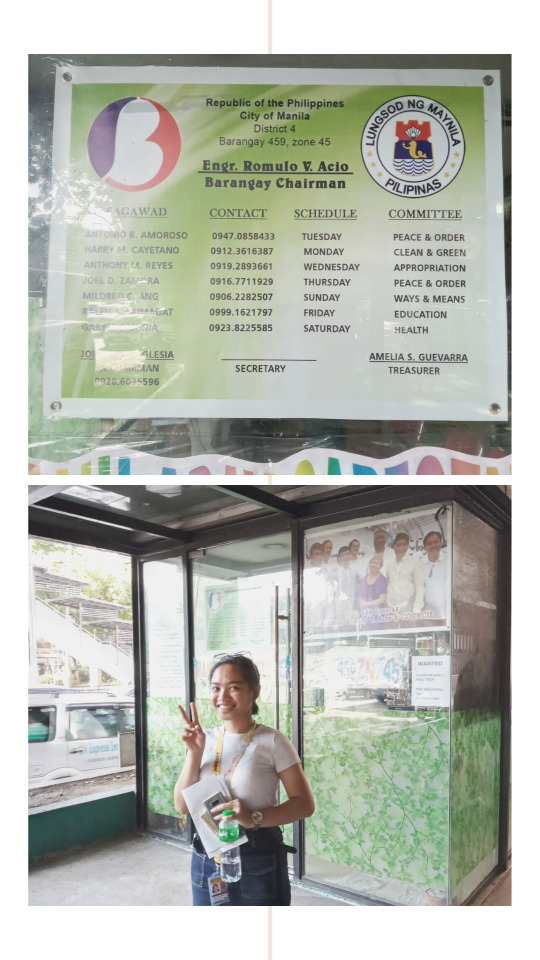
Kagawad Anthony M. Reyes was the one kind enough to answer all our questions about his little community. Barangay 459, was a minuscule barangay compared to the ones surrounding it, only covering streets from MF Jhocson up to Moret Street. Found along Espana Boulevard, across University of Santo Tomas. The Barangay hall itself is located under the overpass, right infront of The ONE Torre De Santo Tomas.
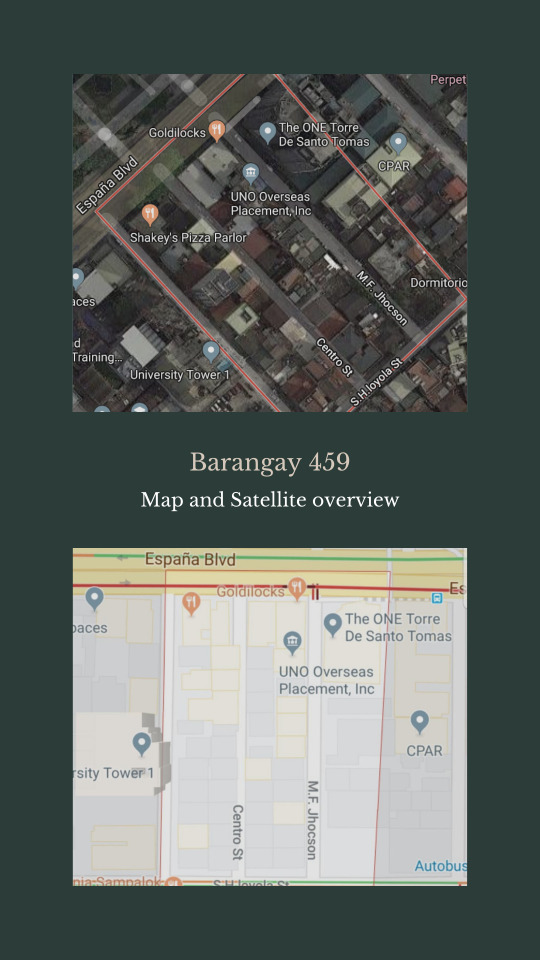
It is best to emphasize that this is really a small community, located in a commercial area in the university belt, it hardly suffers any disasters that most barangays in the provinces unfortunately go through. With that being said, that doesn’t mean they totally don’t experience any diasters at all, it just that they’re really minimal. As thomasians, we have all experienced those hazardous floods caused by torrential rains, along espanya most especially. However, floods aren’t that much of a problem now compared to how bad they were before. Flooding is still very much a possibility but the situation has improved. The local government and the Metro Manila Mayor’s office has been working hand in hand to fix the drainage issues along UST.
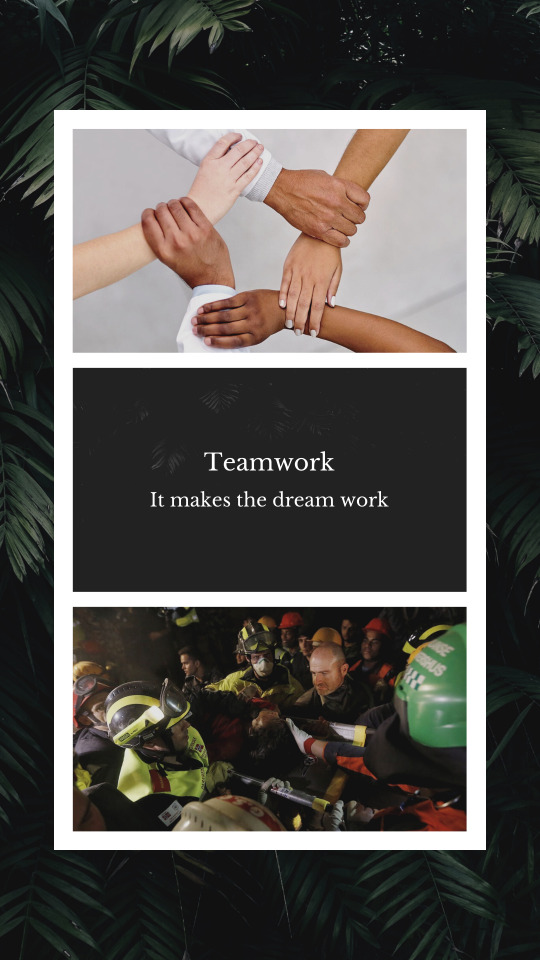
Aside from this, the most issues they have faced are the stubborn people from the older generation. The barangay itself has implemented a lot community projects for the improvement of the community like the Mon-Fri daycare center that is free for use for single parents in the community. But these goals can be obstructed if the people in the community don’t cooperate so teamwork is a must.
That being said, the barangay officials are still trying their very best to address possible needs the community might need in the face of disasters. As we went along with our interview, I noticed a pattern in the way Mr. Anthony Reyes answered my questions about how they deal with issues in the community during tough times. He always spoke about cooperation and working as a team. Which I think is one of their best qualities. They have this mentality of not leaving anyone behind in the face of danger. When asked if there was one specific task assigned per person in their community, he said formally there are services that each person is asked to provide. However, in real life, they do the best that they can to help each other no matter the formalities. Team work makes the dream work as they often say.
Unfortunately, despite their very righteous and bayanihan mindset, it was quite disappointing to hear that they do not have a detailed document at hand about what to do during disasters and a hazard map to identify the problem areas of their community. This is due to the fact that since Mayor Isko Moreno’s election in the office, most barangays had to revamp old plan of actions in order to accommodate the passing of times. Barangay 459 still has not finalized their most current plan of actions or DRRM plans in times of calamity. Another problem I have identified is that they don’t have a formal go-to evacuation center in times of an earthquake. Kagawad Reyes answered that this is because they are a small community. So there was not really a need for it, if there came a time that an earthquake will struck the place he said that the LGU and the Mayor’s office will help them in relocating the residents near the Municipal hall of Manila. Therefore, there really is no convenient safe space in their tiny barangay, an open area to rush to in times of a dangerous event. Lastly, another issue is that since Kagawad Reyes was unable to provide concrete documents I doubt they have trained their citizens on the dos and dont’s during a calamity which is a very important thins to do.

After a short 11-minute interview with Kagawad Reyes, we proceeded to walk around the streets of MF Jhocson until Moret Street in order to identify hazard places and their best practices in the community.

These are the identified vulnerable elements that may put people at risk in times of calamities. Most of the buildings surrounding the barangay are made out of stronger materials and are built to withstand strong earthquakes. However, since this is still a residential area before it was even commercialized as we see it today, there are old houses that needs to be renovated with smarter materials. Kagawad Reyes explained that these are the places they keep monitoring as these are the parts of the community most people are vulnerable when danger might strike.
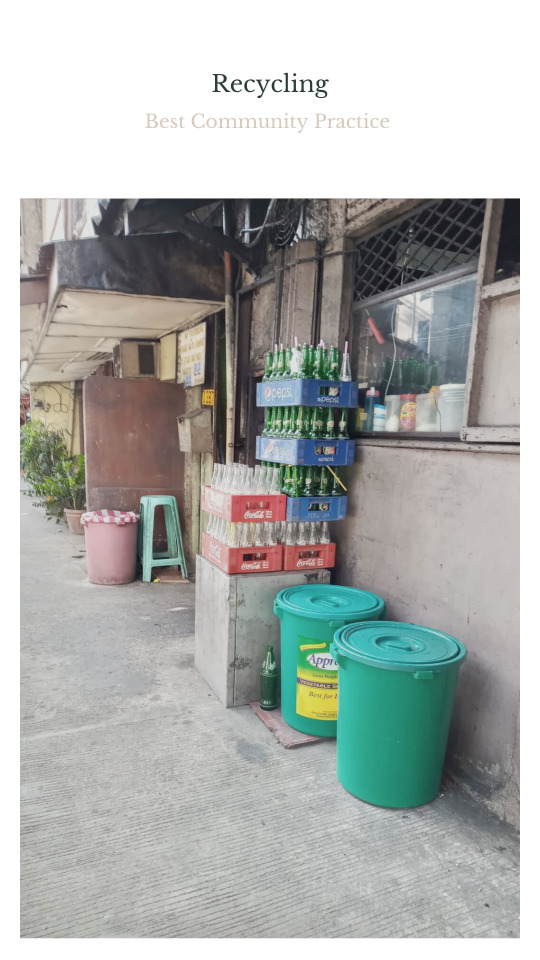
Local eateries and street vendors fill the place along with houses and dorms. The barangay itself is kept in very good shape considering how populated Sampaloc is and how many people pass through here even though they don’t live here. The barangay’s best practices involve the recycling of their wastes. This is very important as it can help in the drainage issue they experience during floods.

However, there are still a few bad seeds mixed with the mostly good ones of the community. Some still don’t follow the regulations posted around the place. Like the No Smoking sign found in the picture above. If you zoom in, you’d find little cigarette buts along the sign itself. Then we found the one place in the community where you can see a bit of trash piling up. These may be done by those who are passing through the community and not those who actually live there.
Overall Reflection and Learning

Overall the activity itself helped me learn a lot, reading DRRM and disasters from my e-reads is vastly different from walking along the community and talking about the possibilities of a disaster. It made me be more observant in my surroundings, what places to avoid and what places should be improved. Barangay 459 itself is a very strong community, characterized by the discipline exemplified by its citizens, the teamwork that can be seen through its barangay officials, the general welcoming atmosphere that can be felt when you talk to the people living there, the alertness and genuine care to the community I observed while I was talking to Kagawad Reyes was hard to come by especially coming from a government official.
The attributes I mentioned should be embodied by all the people here in our country, the alertness and willingness to help should be a no brainer already. Climate change is upon us, we are currently experiencing its harshness little by little. It’s not the time to stand by and belittle what being prepared for future calamities can benefit us. Geographically, the Philippines is very much susceptible to disasters and calamities alike since we are in the pacific ring of fire. Volcanic eruptions, tsunamis, earthquakes are something that should be prepared for in every community and should be taken with the utmost seriousness it deserves. To acknowledge and address the impending environmental issues we may or may not experience is paramount to saving thousands or millions of Filipino lives.
As a member of this community and nation, the vulnerabilities I have seen and observed in Barangay 459 is very common around the urban poor areas and the provinces. Structurally sound houses should be a priority, of course this could only be addressed properly if all people had the means to maintain a house with a good structural framework. However, considering our economy this is simply not possible without financial aid from the government. People in destitute areas are very much vulnerable when danger strikes, so their survival must be prioritized over those who has the privilege to save themselves. In correspondence to this, awareness, seminars/orientations on what to do when something bad happens should be made normal and implemented all over the country. Knowledge is power as they say, it can make or break one person’s possibility of survival.
0 notes